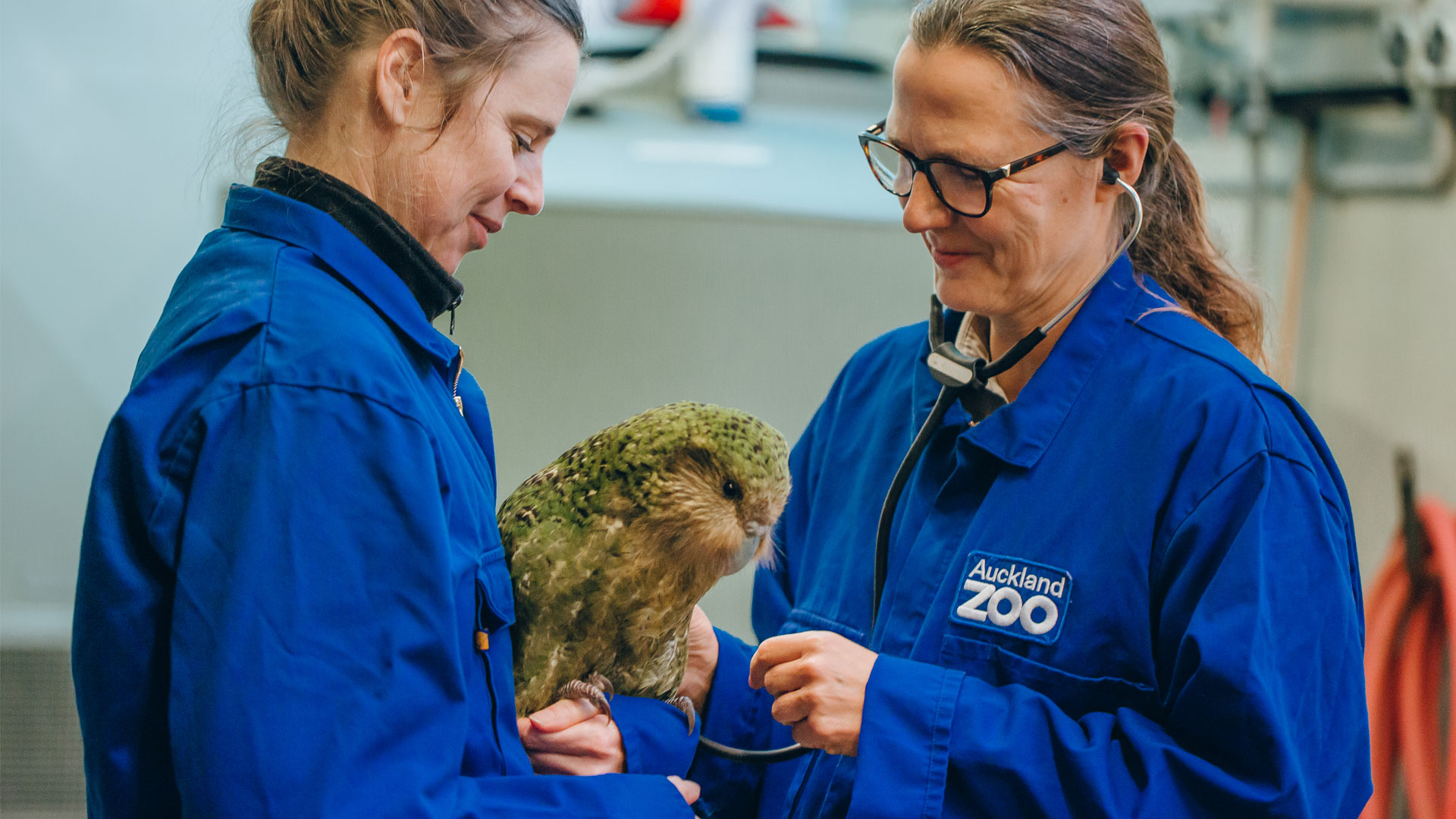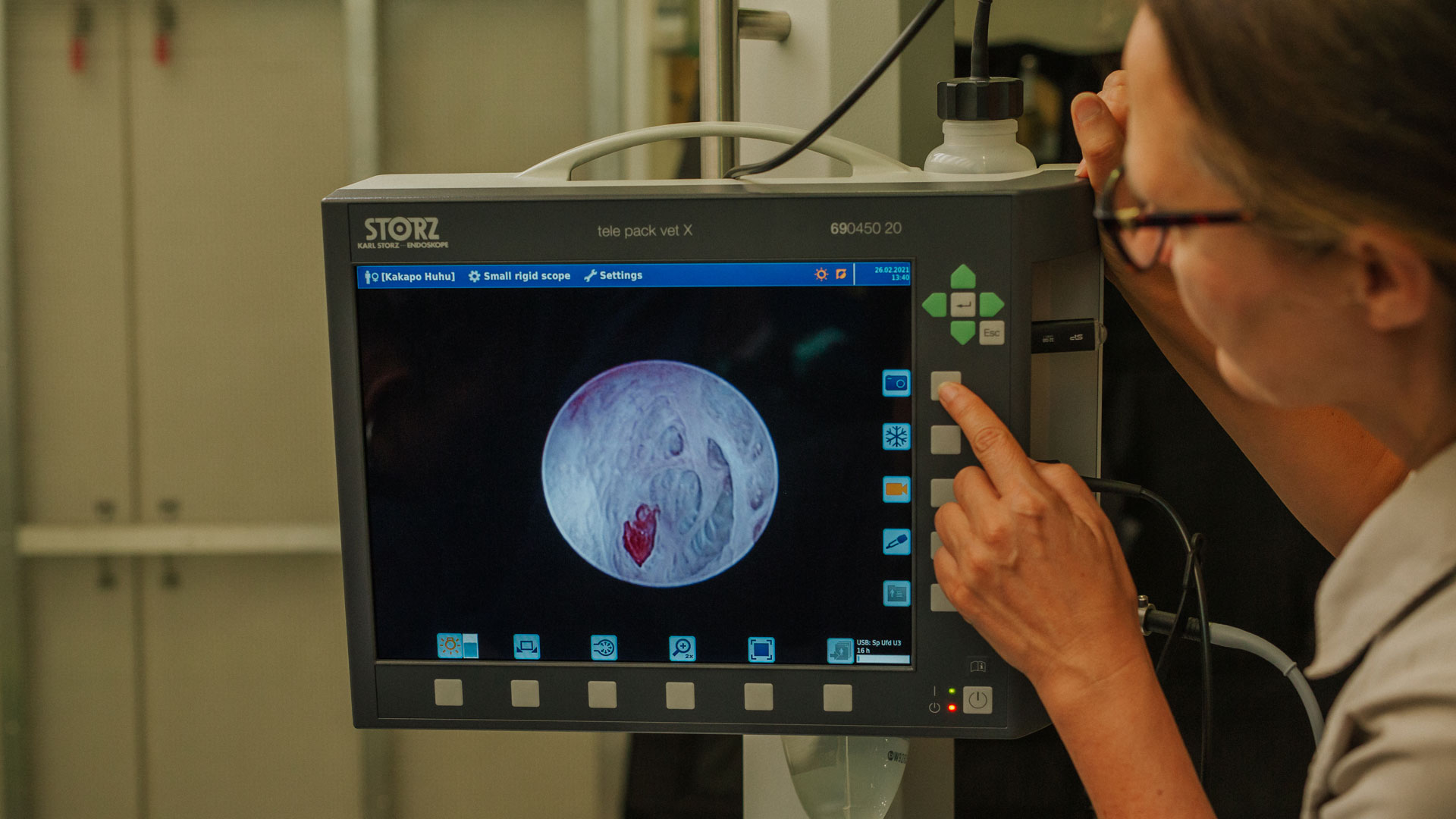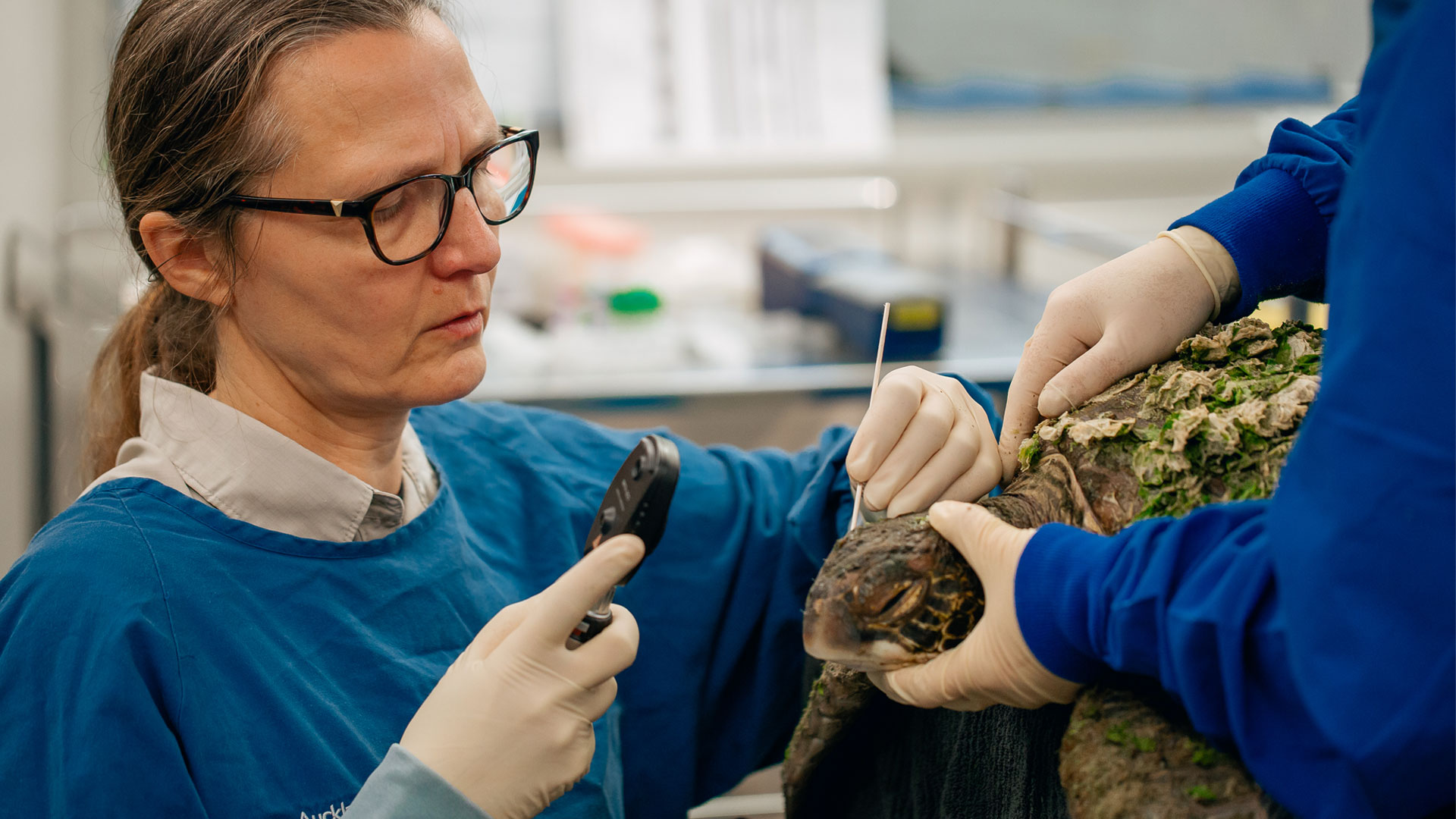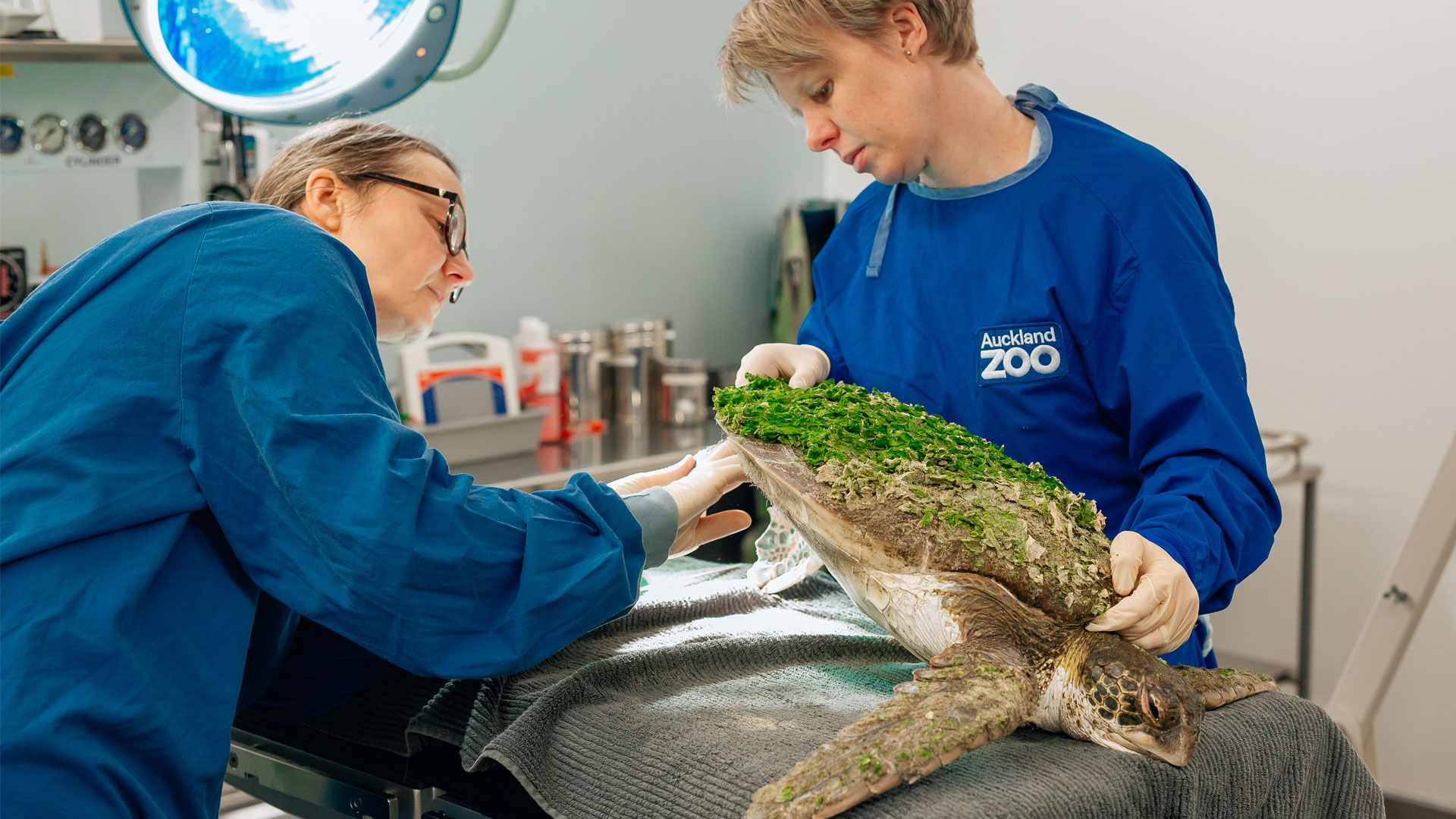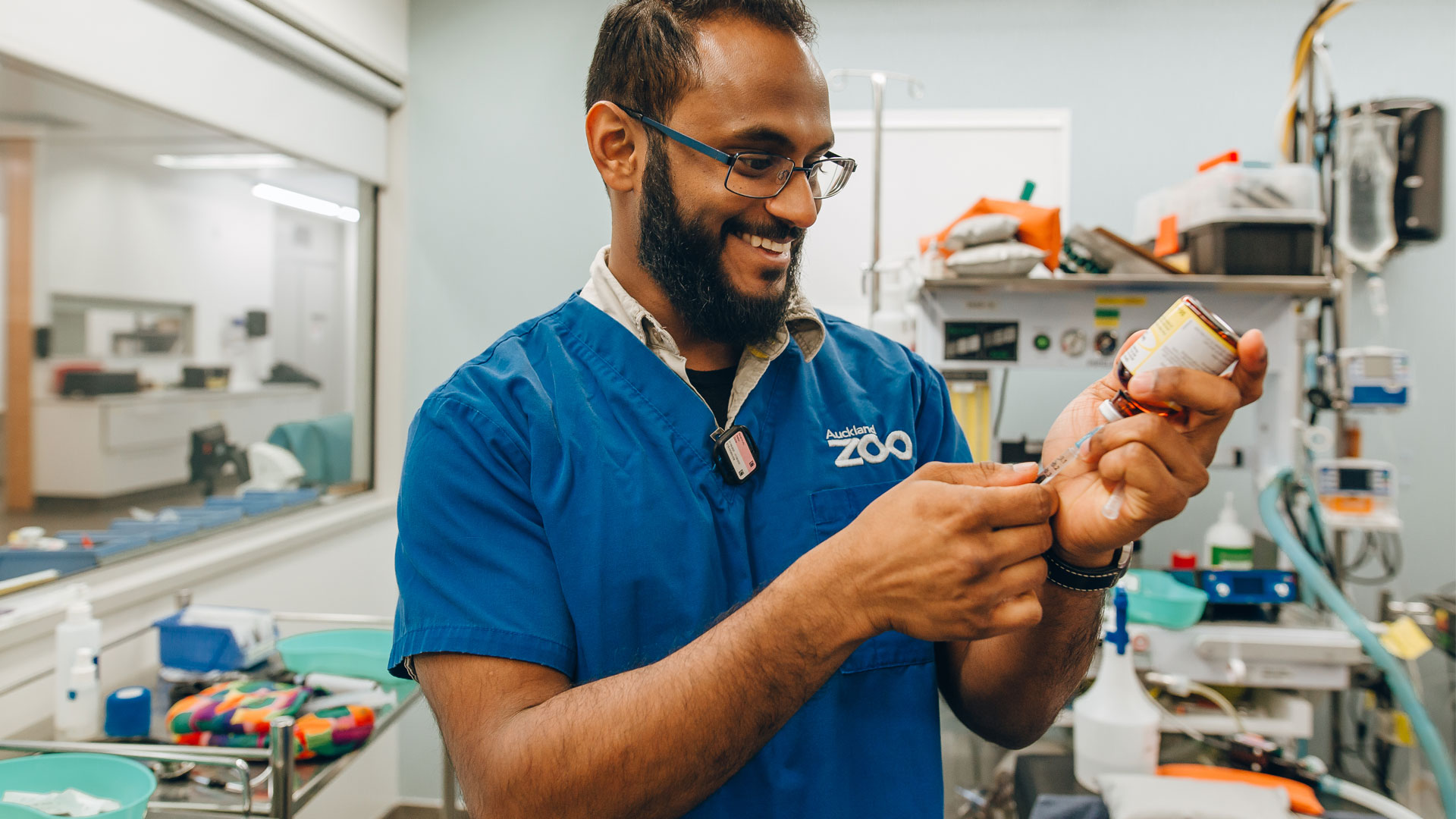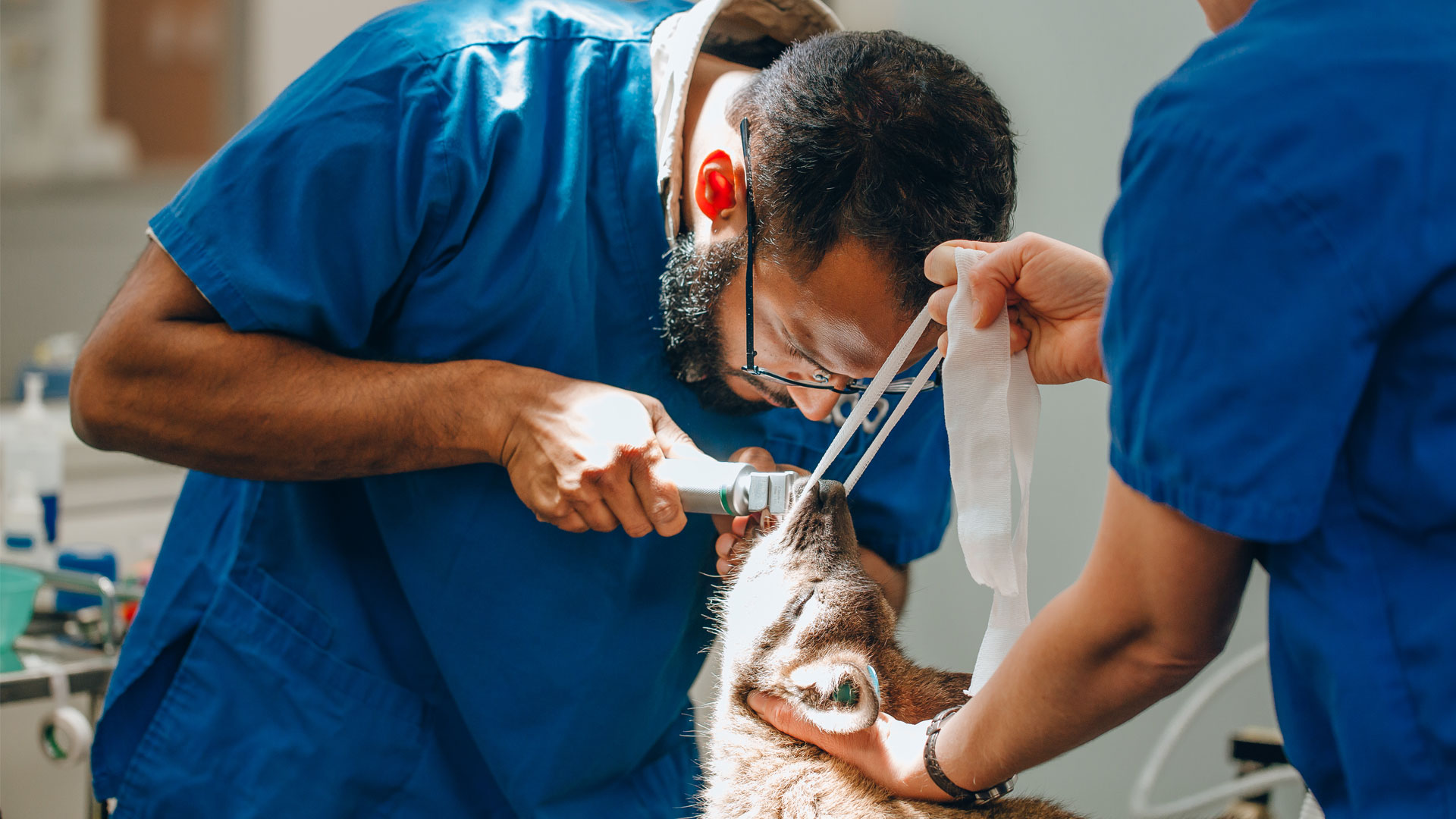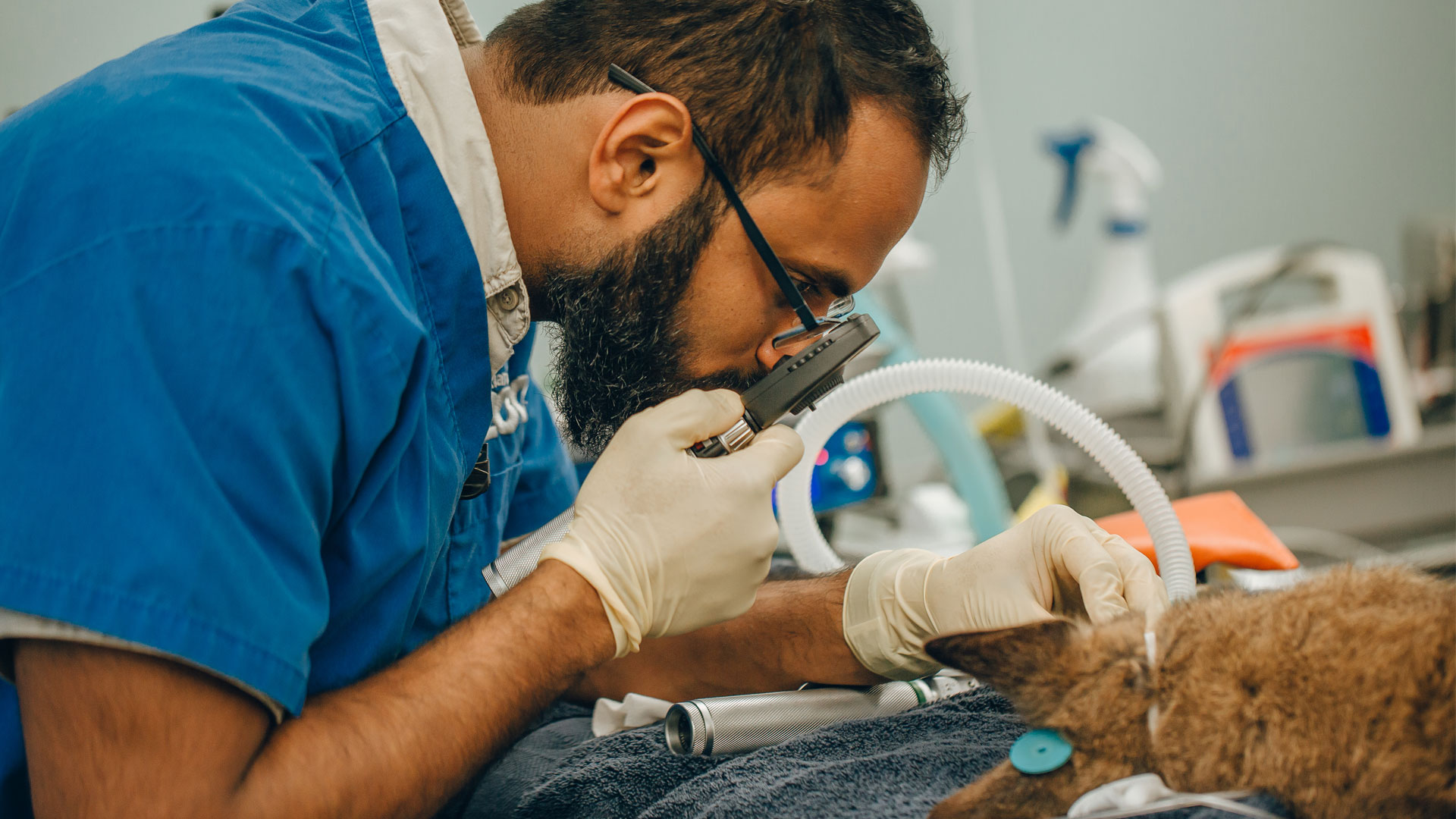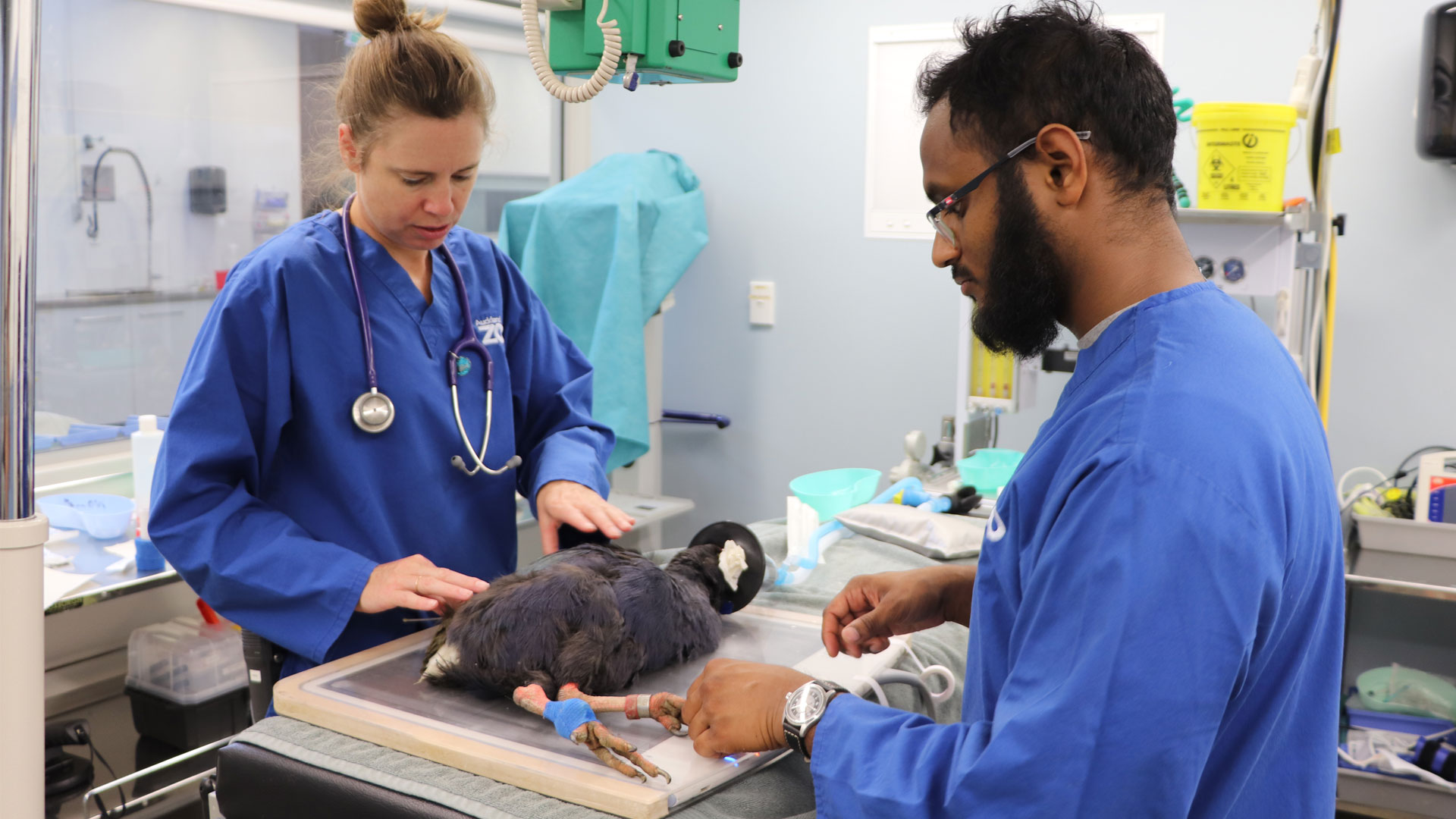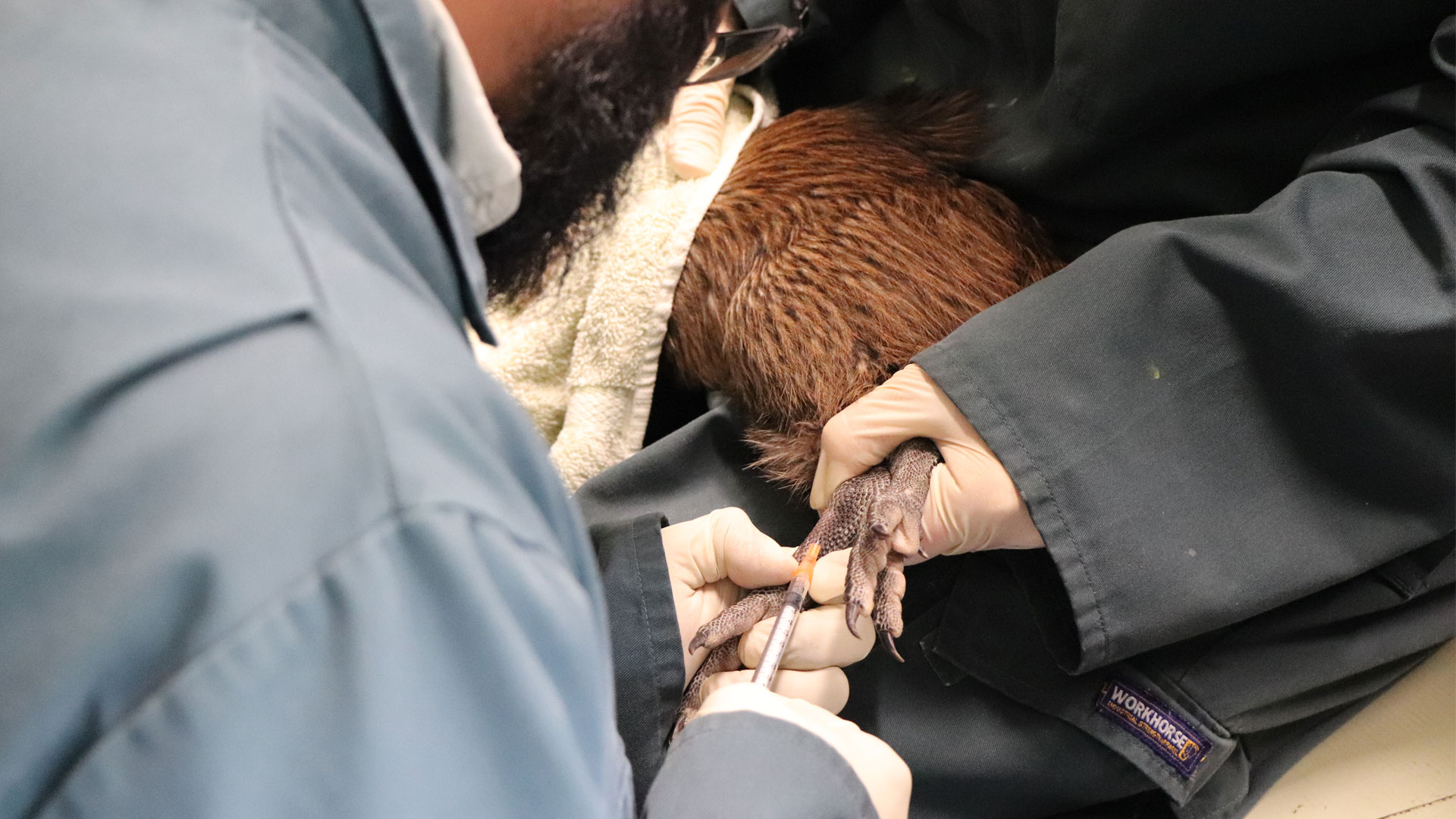“Everything we do in the Vet Hospital is entered into a software used by a majority of zoos globally. Entered into this database are things like drug dose rates and also animal ages, so at a global scale so you can see patterns within that species which is a really useful resource if we end up having to use a medication not used before.”
“We can look at that data alongside any published literature, because when wildlife is so diverse, there's not always a publication for exactly what you want. It's a calculated risk. But you're using the best available evidence, and your own clinical judgment to make that call. Ultimately, if we don't treat if we've got an animal that's sick, that's even more risky,” Stefan explains.
Alongside the clinical setting, conservation activities are a huge drawcard of a residency at Auckland Zoo, especially for someone who explains their whole drive as a veterinarian is simply to conserve the planet and species that reside on it. For Stefan, more recently this has involved a trip to Whenua Hou (Codfish Island) to learn the ropes of island life for an upcoming kākāpō breeding season. There were cold, dark and early starts, often running off of caffeine, but that doesn’t phase a conservationist in the slightest when they are off to assist Department of Conservation (DOC) rangers in transmitter changes and health checks for an incredibly rare, critically endangered parrot. It’s not for the faint of heart – you pack up your bag with emergency clothing, a personal locator device, GPS, radio, first aid and telemetry equipment, then spend six, eight, sometimes ten hours in mountainous terrain, at times to track down just one bird! But this is all part of the fun, Stefan explains.




